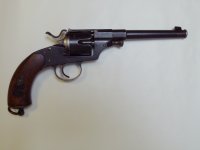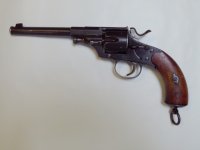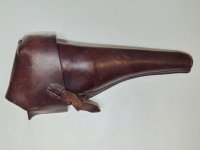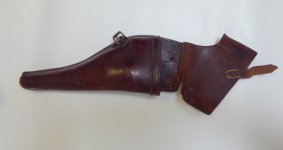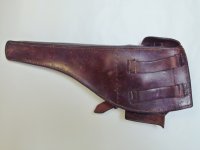The Odessa gun show last weekend was good to me. I got this Modell 1879 Reichsrevolver and holster. It was made by Gebr. Mauser, and they didn't make very many of them. It's really pretty and the bore is as good as the outside. The holster, made by H. Becker & Do, is a little ratty. I plan to shoot the revolver with black powder rounds. Three questions:
1. The butt is stamped with a unit mark: B.4.A.4.12. Anyone know what unit this is?
2. Is this the correct holster for a Modell 79?
3. Is the cutout on the flap at the rear of the holster for the butt of the pistol original, or did somebody modify it?
1. The butt is stamped with a unit mark: B.4.A.4.12. Anyone know what unit this is?
2. Is this the correct holster for a Modell 79?
3. Is the cutout on the flap at the rear of the holster for the butt of the pistol original, or did somebody modify it?
Attachments
Last edited:

